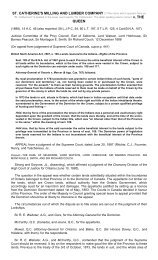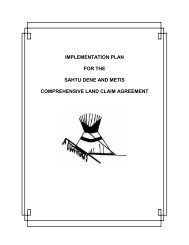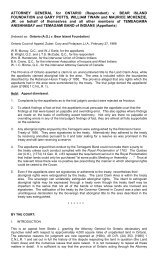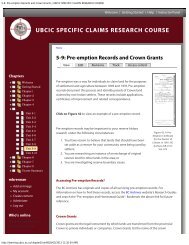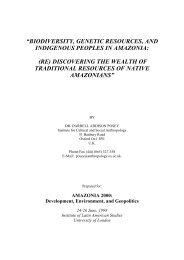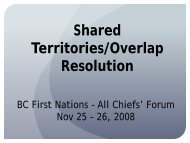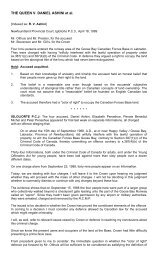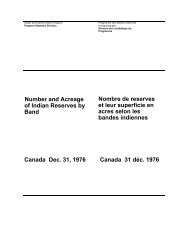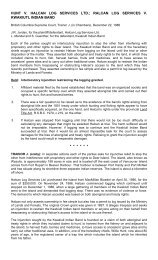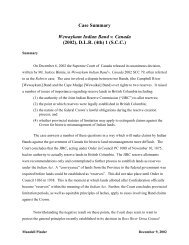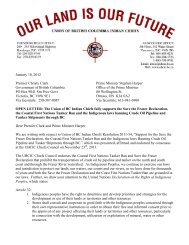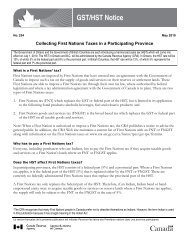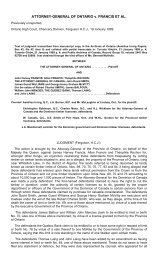Constitutional âPropertyâ and Reserve Creation: Seybold Revisited
Constitutional âPropertyâ and Reserve Creation: Seybold Revisited
Constitutional âPropertyâ and Reserve Creation: Seybold Revisited
You also want an ePaper? Increase the reach of your titles
YUMPU automatically turns print PDFs into web optimized ePapers that Google loves.
16 MANITOBA LAW JOURNAL VOL 32 NO 1<strong>Creation</strong> of an Indian Act reserve goes to the core of federal jurisdiction, atleast where that entails exclusive use by Indians in the normal manner contemplatedby that Act. In the case of Treaty No. 3, the promise to create reserves, offulfilling treaty obligations, <strong>and</strong> “administering” “l<strong>and</strong>s reserved for Indians” isclearly on its face within the federal government’s jurisdiction <strong>and</strong> so, in additionto being intra vires, should normally be immune from s. 109’s influence underthe doctrine of inter-jurisdictional immunity.I would conclude that it is not entirely out of the question that the federalgovernment has the unilateral power to create a reserve on Treaty No. 3 Crownl<strong>and</strong>. Whether a particular reserve creation is intra vires will depend on the factsof the case at h<strong>and</strong>.VII. PITH AND SUBSTANCE OF IR 38B: HOW UNIVERSAL IS IT?Looking at the facts in <strong>Seybold</strong>, we might actually suspect the federal governmentof having a colourable purpose to the proposed creation of IR 38B. They signedthe Treaty in 1873, created IR 38B shortly afterwards, <strong>and</strong> then proceeded toaccept a surrender for sale of that reserve in 1886. Parliament then claimed tohave the right to the proceeds of sale to administer for the Indians. This is mentionedonly to highlight the importance of context to the analysis of pith <strong>and</strong>substance.The case of IR 38B in <strong>Seybold</strong> may not be a very sympathetic case if a pith <strong>and</strong>substance analysis is used, as the reserve creation appears almost as a vehicle forputting funds at the disposal of Parliament that are, but for the Indians’ briefinvolvement, properly at the disposal of the provincial legislature. 51 Indeed ananalysis of the lower court decisions in <strong>Seybold</strong> reveals that the lower courts wereconcerned not with the creation of the reserve so much as the subsequent disposal<strong>and</strong> its validity. 52 Since the validity of the disposal was what was at issue inthe <strong>Seybold</strong> case this makes sense. This may go some length to explain the short<strong>and</strong> simplistic reasons given by the Privy Council in <strong>Seybold</strong>. Thus caution oughtto be used when applying this case in other contexts, in particular now that theanalysis of treaty rights applied by the courts is very different than that used in<strong>Seybold</strong> <strong>and</strong> St. Catherines Milling.5152This must be viewed of course, against the backdrop practice of not creating reserves on l<strong>and</strong>scontaining minerals or other valuable resources.Supra note 49.



